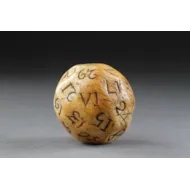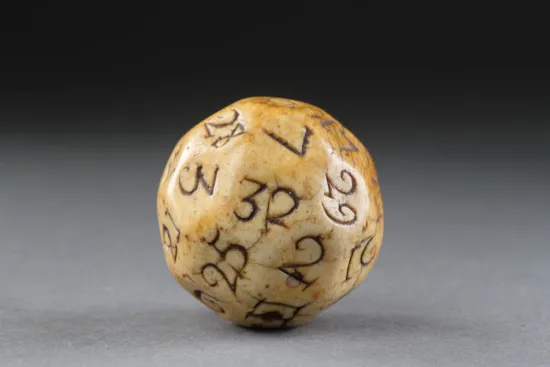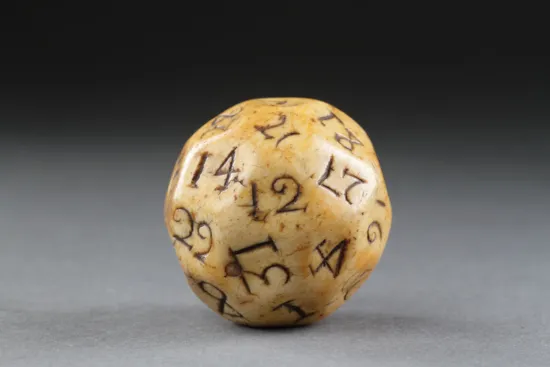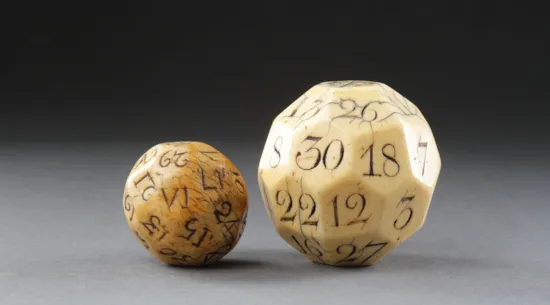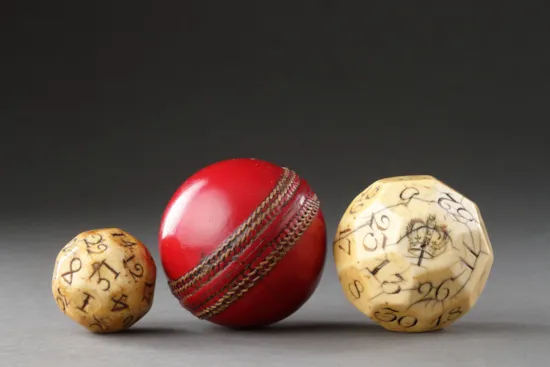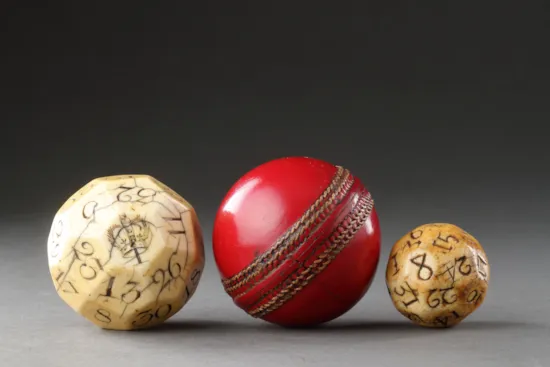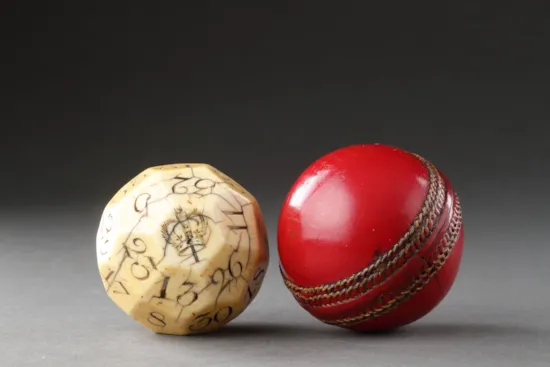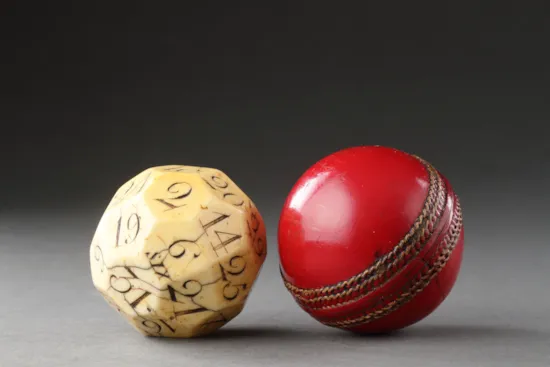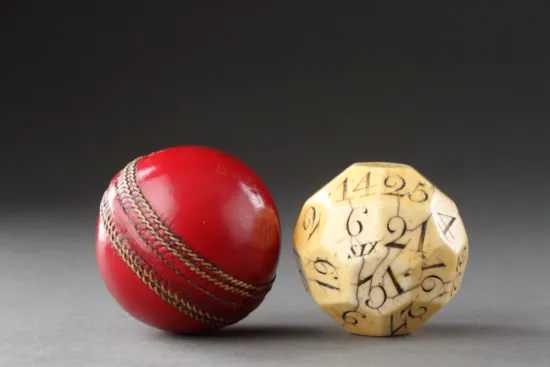An Early British Sailors Walrus Ivory Teetotum Ball Numbered 1 - 32 on Faceted Sides
An Early British Sailors Walrus Ivory Teetotum Ball Numbered 1 - 32 on Faceted Sides
The carved Arabic numbers save for VI which is the Roman Numeral
Superb rich dark golden colour and patina
17th Century
Size: 4.5cm dia. - 1¾ ins dia.
The carved Arabic numbers save for VI which is the Roman Numeral
Superb rich dark golden colour and patina
17th Century
Size: 4.5cm dia. - 1¾ ins dia.
An Early British Sailors Walrus Ivory Teetotum Ball Numbered 1 - 32 on Faceted Sides
The carved Arabic numbers save for VI which is the Roman Numeral
Superb rich dark golden colour and patina
17th Century
Size: 4.5cm dia. - 1¾ ins dia.
The carved Arabic numbers save for VI which is the Roman Numeral
Superb rich dark golden colour and patina
17th Century
Size: 4.5cm dia. - 1¾ ins dia.
‘Totum’ is Latin for ‘the whole’ and therefore is used in reference to the ‘whole stake’ in gambling. Teetotum balls act somewhat like spinning dice, but have faceted numbered sides so when thrown there is an equal chance of any number turning up which is not the case with dice.
Lotteries first began to be an acceptable form of gambling in the reign of Elizabeth I. In 1568 - 69 the government needed to quickly raise a substantial sum of money for urgent repairs to the harbours and coastal fortifications of England in order to repel the threatened seaborne invasion from the Spanish. Successive Acts of Parliament then established lotteries as a legitimate means of increasing revenue and over time they became a lucrative source of government income.
Lotteries first began to be an acceptable form of gambling in the reign of Elizabeth I. In 1568 - 69 the government needed to quickly raise a substantial sum of money for urgent repairs to the harbours and coastal fortifications of England in order to repel the threatened seaborne invasion from the Spanish. Successive Acts of Parliament then established lotteries as a legitimate means of increasing revenue and over time they became a lucrative source of government income.
Ex Private Scottish collection
An Early British Sailors Walrus Ivory Teetotum Ball Numbered 1 - 32 on Faceted Sides
